As Cicero is often (mis)quoted as saying, if you have a garden and a library, that is all you need. And since the pandemic, our love of a garden has only got greater. Yet these days it’s often less about getting your hands dirty in the flowerbeds and more about having somewhere to kick back and enjoy a good book or drink rosé with friends.
But while visitors are swooning over raised beds and begonias at the RHS Chelsea Flower Show this week, the price of having a garden of one’s own is higher than ever – especially if you want a generous one. According to the latest research by estate agent Savills, properties (whether houses or flats) with big gardens cost 39 per cent more per square foot than those with the smallest ones, showing a strong correlation between the size of outdoor space and the price paid for indoor space. The analysis reveals that buyers are paying around £424,000 for a 1,200 sq ft house (a typical three-bedroom home) with a large garden, compared with £260,000 for one with a small garden or no garden at all.
‘The value of private outdoor space is a pandemic legacy trend that’s become permanently ingrained in the home-buyer’s psyche’
In London, the average back garden is 150 sq m, according to government data. In Kensington and Chelsea and neighbouring Westminster, the average drops below 100 sq m. The boroughs with the biggest outside spaces are Bromley (average: 328 sq m), Barnet (280 sq m) and Harrow (266 sqm), according to Savills. In rural areas, the premium is less pronounced – homes with the largest gardens cost 8.3 per cent more than the local authority average – but in an urban area it’s 12.9 per cent.
Lockdowns may be a fast-receding memory, but we are still prepared to dig deep for a garden, says Frances McDonald of Savills: ‘The value of private outdoor space is a pandemic legacy trend that’s become permanently ingrained in the home-buyer’s psyche. Demand for homes with larger gardens has increased significantly over the past three years.’
Around a fifth of households in London have no access to a garden, according to the ONS, and flats without outside space struggled to sell during the pandemic. Demand has since bounced back but there’s still a big value gap. Ben Hunt of Winkworth in Hammersmith says that garden flats typically command a premium of around 7-10 per cent over those without outside space – such as this two-bedroom example in Herne Hill, south-east London, on the market for £650,000.
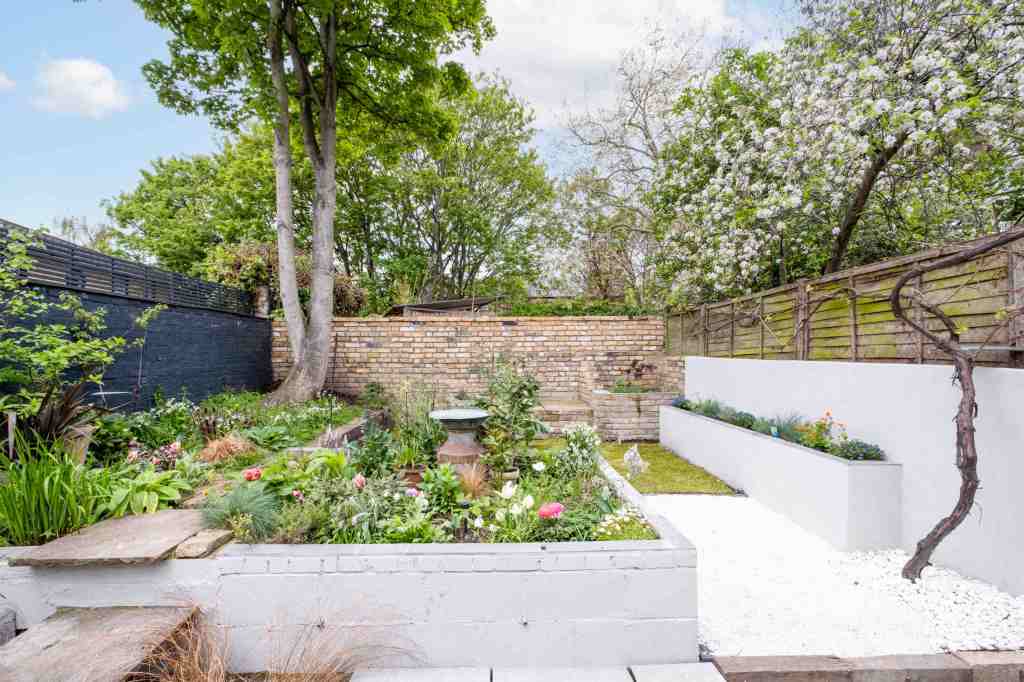
In central London the garden premium is around 12-15 per cent, says Robert Sturges of Chestertons, with post-pandemic demand fuelled by hybrid working patterns and increased pet ownership. But not all gardens are equal. Top of the wish list for buyers is a south-facing, level space, says buying agent Nigel Bishop of Recoco: ‘A steep or sloping garden can put people off – steps can be a no-no.’ Not everyone wants a large garden, either. ‘Most flat-hunters prefer a small garden or patio area that is easy to maintain but large enough to entertain guests,’ says Nigel.
Outdoor kitchens and built-in seating areas are de rigueur, and al fresco dining is the focus of the Hamptons Mediterranean Garden at Chelsea this week. It’s designed by Filippo Dester of the Garden Club, which specialises in urban and small gardens. Inspired by Dester’s northern Italian home, the Hamptons Mediterranean Garden includes aromatic herbs and the drought-resistant macchia shrub.
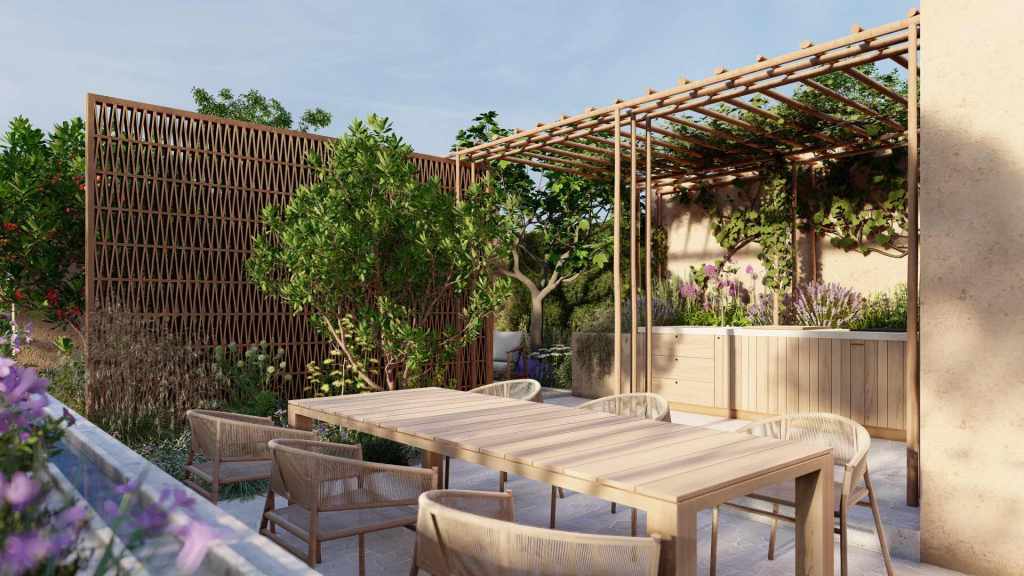
Dester says a pergola is an affordable way to create an entertaining space in a small urban garden, providing shade but also shelter from rain (this is not Italy). ‘Use a simple timber or metal structure on which climbing plants are trained, and a canopy can be fixed,’ he says. He also recommends using plants as a key element to create a welcoming, softer space. ‘Small trees can add a sense of scale and privacy. Scented herbs in large pots can be freshly picked when cooking or mixing cocktails, adding a fun, interactive layer to garden entertaining.’
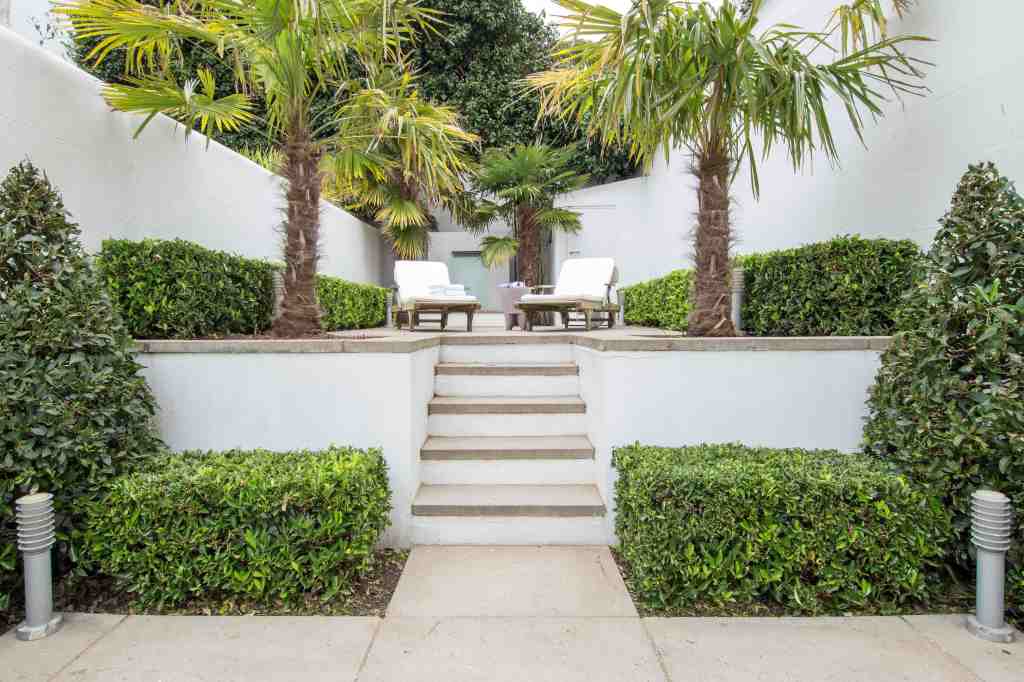
Palms and bamboo add a Mediterranean feel to the courtyard garden (above) in a four-bedroom house for sale in Brighton for £2.495 million, while a larger than average garden (below) at a four-bedroom terrace in Wimbledon, on sale for £1.2 million, offers a verdant spot to relax.
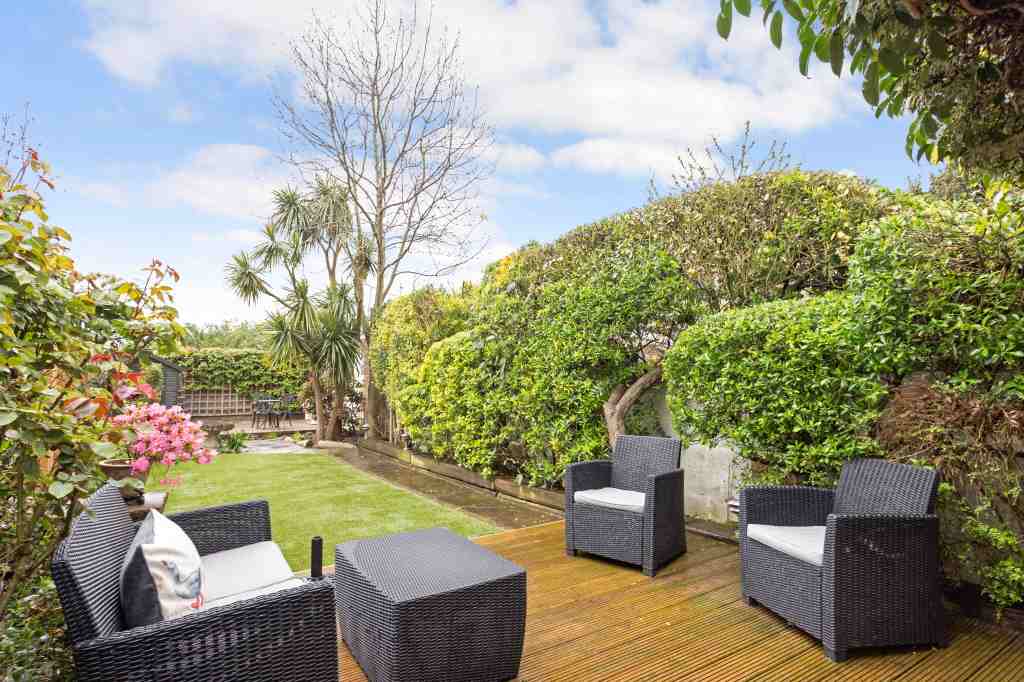
Yet gardens in the capital are not getting greener – many are paved or decked over, with the loss of lawns and trees diminishing their role in preventing surface flooding and helping to keep the city cool. The 2010 report London: Garden City? looked at their changing composition and found that in just a decade an average 11 sq m of vegetation had been lost per back garden, with hard surfacing and buildings such as sheds up by 26 and 55 per cent respectively (and that was way before the pandemic boom in garden rooms).
Jo Thompson, garden designer and consultant on the communal kitchen garden at the Chelsea Barracks development in south-west London, says increasing biodiversity and adapting to climate change are now key trends. ‘But as well as drought-tolerant plants for hot summers we need to think about colder winters too. I’m hoping to see solutions to water management, and also the use of different, recycled planting mediums.’ See her garden at the Hampton Court Palace Garden Festival in July.

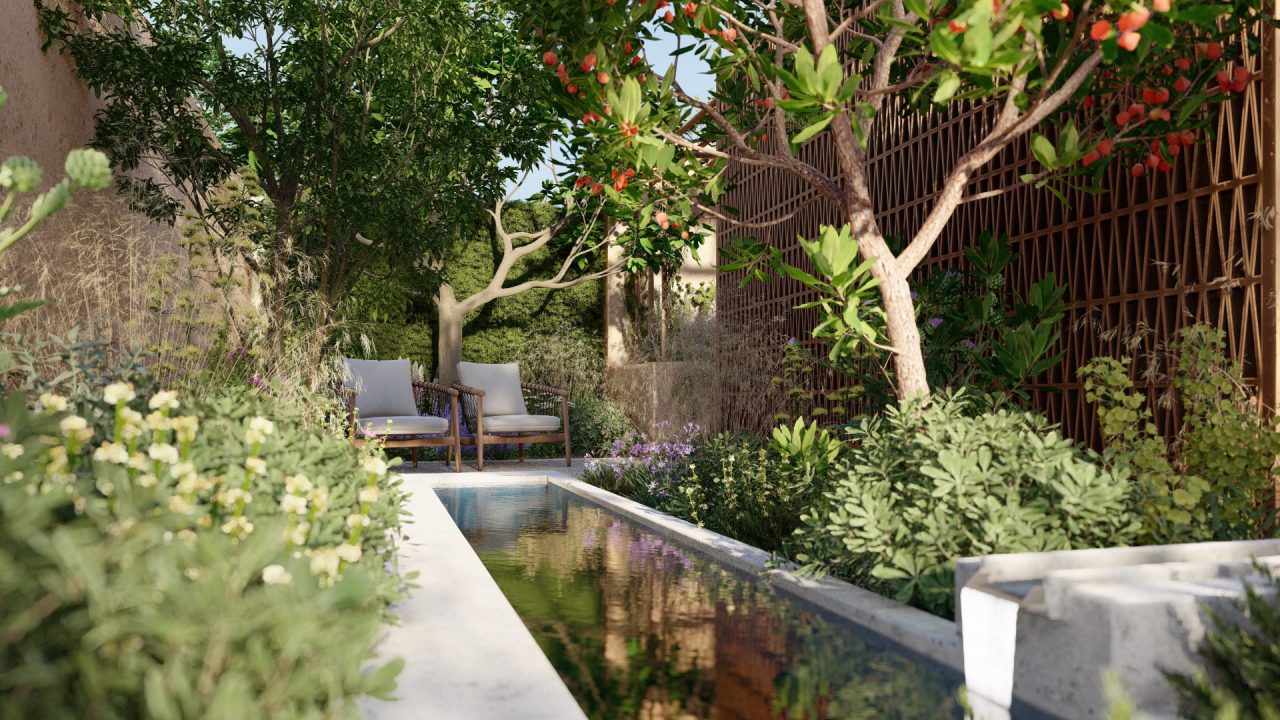
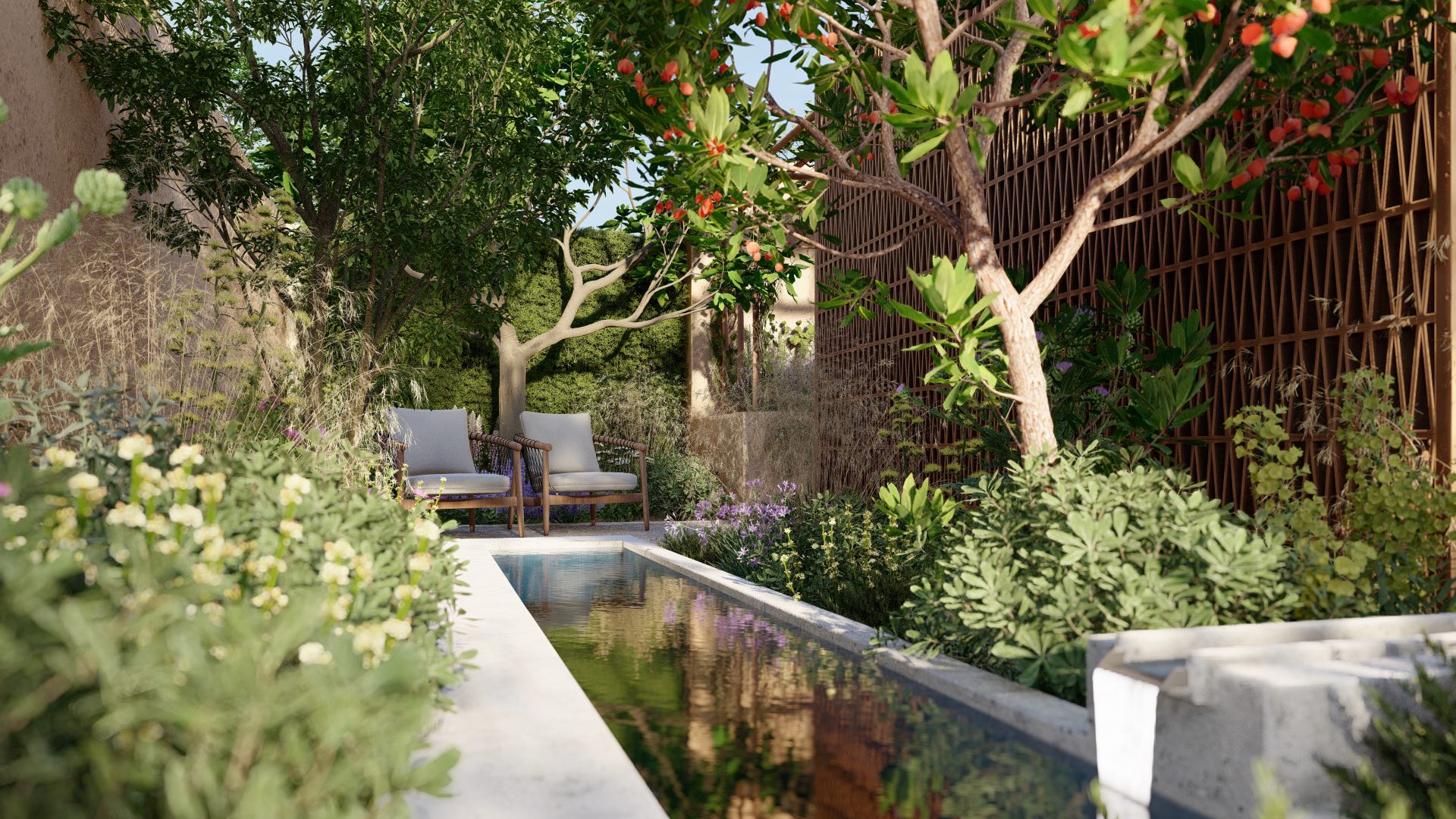




Comments